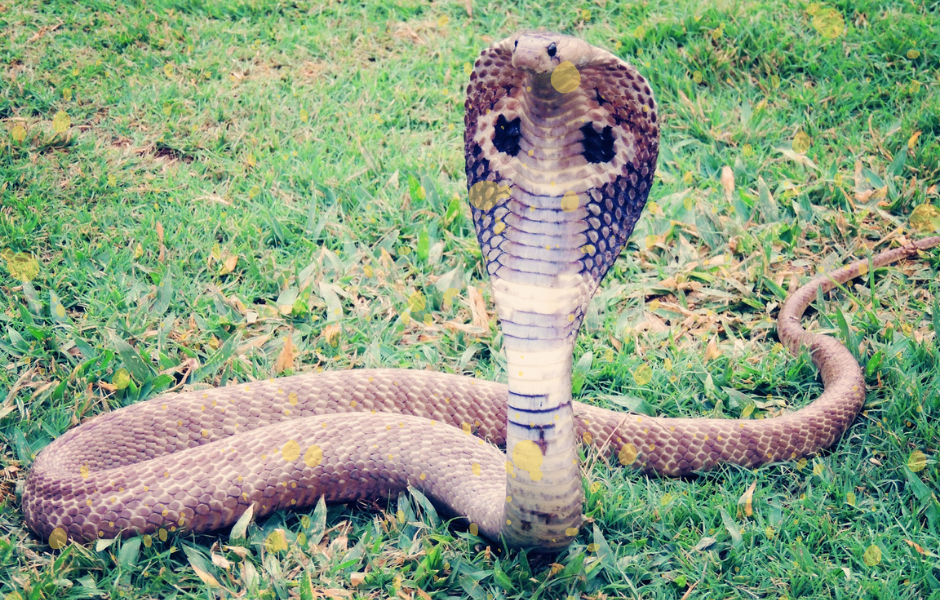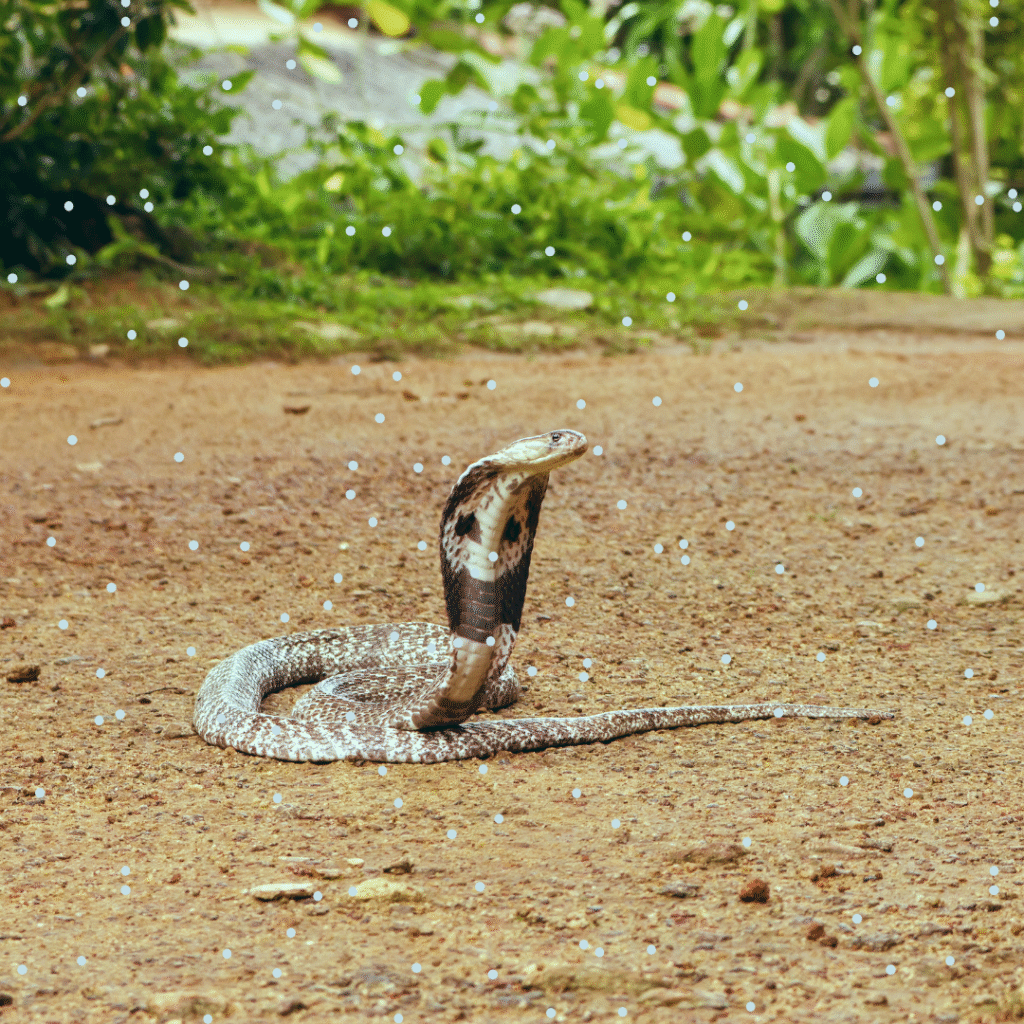
This children’s article, Poisonous snakes found near Mount Everest raise climate change fears, has been written for native English speakers and learners of English as a second or foreign language. It can help children practise reading and comprehension, build useful vocabulary, and explore an unusual animal story linked to climate change. Written by Sinead O’Carroll, an experienced teacher and writer.
Snakes in the mountains?
Something very strange has happened in Nepal. Ten venomous snakes have been found near Kathmandu, a city close to Mount Everest. This is a very unusual place to find tropical snakes, which usually live in hot, wet parts of the country.
Nine of the snakes were king cobras, and the other was a monocled cobra, both of which are highly venomous. These snakes were rescued from four different areas near the capital, including homes and gardens. Snake eggs and nests were also found nearby.
This discovery has surprised experts and made many people concerned. Why are these snakes suddenly appearing in cooler, mountainous areas?
What are these snakes?
The king cobra is the longest venomous snake in the world. It can grow up to 5.5 metres (18 feet) long! Even though its venom is not the strongest, it releases so much in one bite that it can kill an elephant – or 20 people. It’s a shy snake, but dangerous if threatened.
The monocled cobra is smaller, but still dangerous. It gets its name from the round mark on its hood that looks like a monocle — an old-fashioned eyepiece, like one side of a pair of glasses. Monocled cobras are usually found in hot, lowland areas like rice fields and marshes.
So what are they doing in the hills?
A warning sign?
Experts think the sudden appearance of these snakes in mountain areas could be a sign of climate change. Nepal has been getting hotter in recent years. Scientists say the average temperature is rising by about 0.05°C each year. Doesn’t sound like a lot, but it quickly adds up and has a big impact.
This rise in temperature could be pushing animals, including snakes, to move into cooler areas to find a better home. And if snakes are nesting in the forests near Kathmandu, it might mean they are starting to live and breed in these higher regions.
Some experts also think the snakes may have arrived by accident on trucks carrying logs or hay. But because eggs and nests were found, it seems they are settling in.
Why it matters
Kathmandu is only 160 kilometres from Mount Everest, the highest mountain in the world. It is usually too cold for snakes like king cobras and monocled cobras. So their arrival is a warning sign that things may be changing, not just for snakes, but for whole ecosystems.
If animals move to new areas because of rising temperatures, it can affect the plants, wildlife, and people who live there. Venomous snakes are also very dangerous to the people living in and visiting these places, so this change is affecting safety as well. That’s why scientists are paying close attention to these recent snake sightings.

Article vocabulary list
- Venomous – Poisonous; able to inject venom through a bite or sting.
- Rescued – Saved from danger.
- Monocled – Having a single round mark (like a monocle).
- Habitat – The natural home of an animal or plant.
- Ecosystem – A community of animals, plants, and their environment.
- Altitude – Height above sea level.
- Climate change – Long-term changes in temperature and weather around the world.
- Tropical – Warm and wet, like the climate near the equator.
Comprehension questions
Just click the plus (+) to see the answer
1. How many venomous snakes were recently found near Kathmandu?
a) 5
b) 10
c) 20
Answer: b) 10
2. What is special about the king cobra?
Answer: It’s the longest venomous snake in the world and can grow up to 18 feet.
3. Why is it strange to find these snakes in Kathmandu?
Answer: Because it’s a colder, mountain area where these tropical snakes don’t usually live.
4. What mark does a monocled cobra have?
a) A triangle
b) A line
c) A round “monocle” shape
Answer: c) A round “monocle” shape
5. What do experts think is causing the snakes to move into higher areas?
Answer: Climate change and rising temperatures.
6. Where were the snakes found?
Answer: In homes, gardens, and forests near Kathmandu.
7. What might the presence of eggs and nests mean?
Answer: The snakes are starting to live and breed in the area.
Sinead is a writer and EFL teacher with eight years’ experience. She’s a native English speaker who loves making news stories fun and easy to understand for children around the world. Her passions include travel, animals, and helping to make the world a kinder, more sustainable place.




